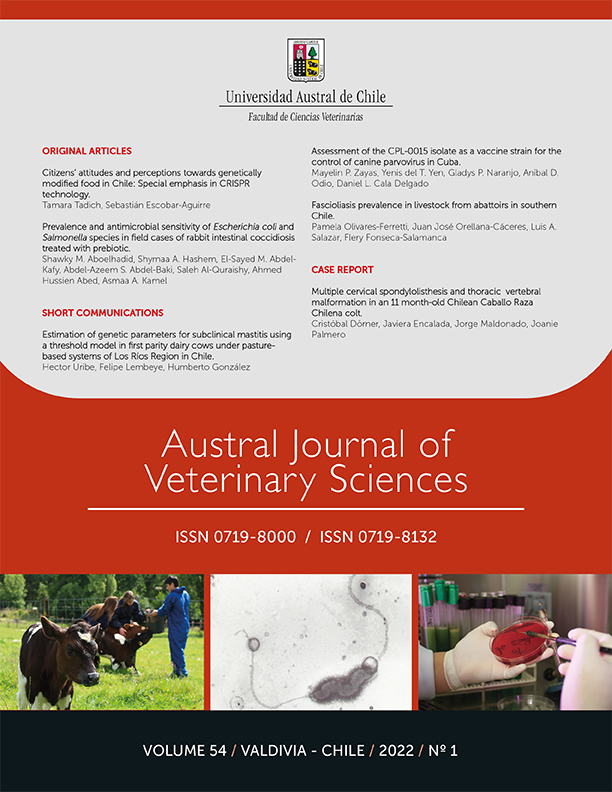Assessment of the CPL-0015 isolate as a vaccine strain for the control of canine parvovirus in Cuba
Contenido principal del artículo
Resumen
The safety and protective efficacy of the CPL-0015 Cuban isolate of canine parvovirus type 2 (CPV-2) were evaluated for its possible use as a vaccine strain candidate. The study included a total of 23 healthy Beagle dogs of both sexes, aged 84 days and without specific maternal antibodies against canine parvovirus. Safety was analysed by comparing clinicopathological values, food consumption, body weight, rectal temperature and white blood cell counts for 14 consecutive days between control dogs (n=5) and dogs subcutaneously injected (n=10) with 2 mL (equivalent to two doses) of the CPL-0015 strain with an antigenic titer of 106,0 infectious dose50 in cell culture/mL. The protective effectiveness was determined by measuring and comparing anti-CPV-2 IgG levels and clinical signs during 56 experimental days between control dogs (n=2) and dogs inoculated (n=6) with double doses of 1 mL each, separated by a 21-day interval. All animals were challenged orally on day 35 with the virulent strain Cornell-780916 (105,° infective dose50 in cell culture/mL). The results showed that the CPL-0015 strain did not negatively impact the physiological condition of the exposed animals. The inoculated and challenged animals showed not only significantly increased levels of anti-CPV-2 IgG (P<0.05) when compared to days 0, 35, and the control group animals but also had 100% survival without clinical signs of the disease, unlike the control group. It is concluded that CPL-0015 is safe and provides effective protection against homologous virulent strains.

